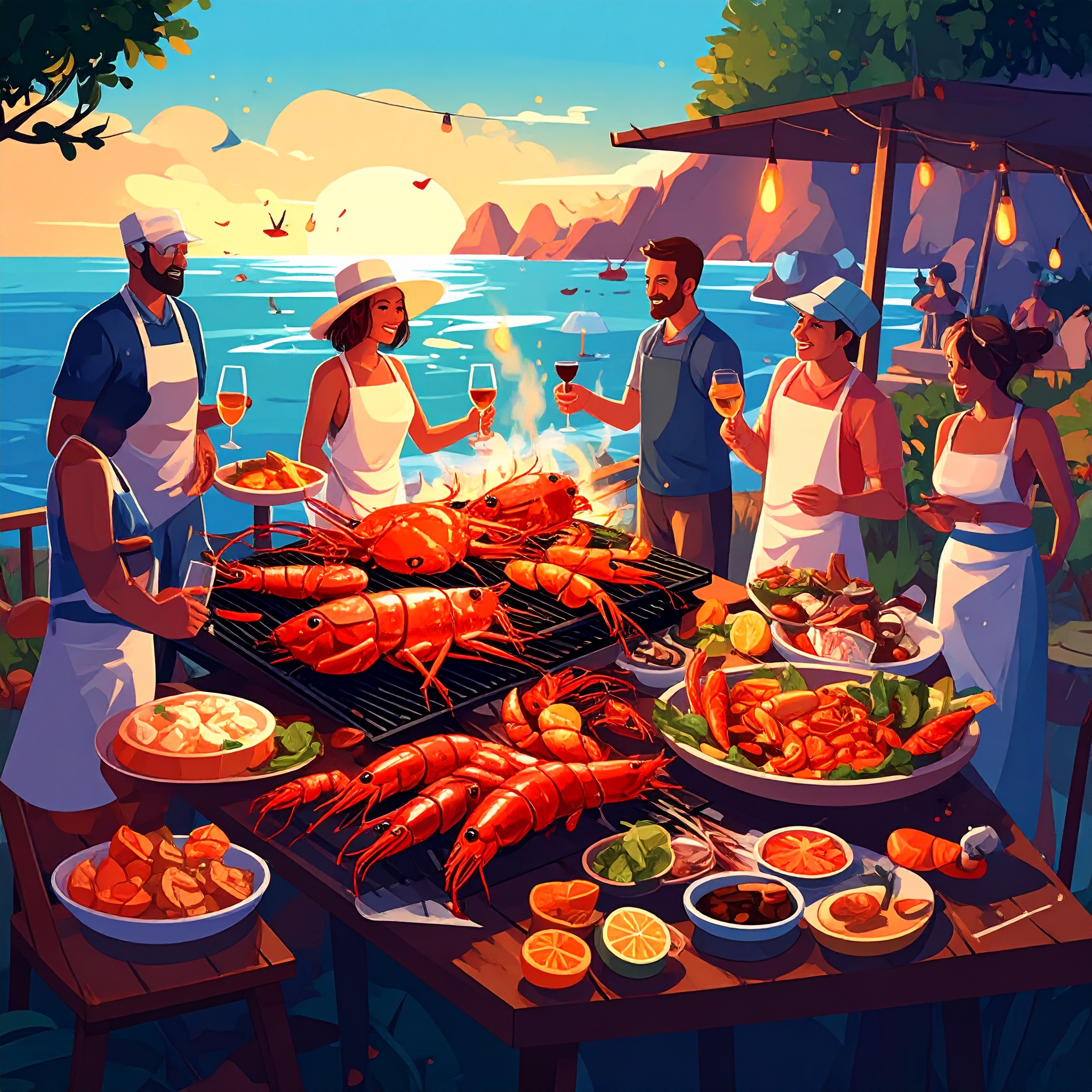Nestled along the Sea of Japan in the Hokuriku region, the city of Kanazawa offers a unique blend of historical elegance and culinary excellence. Renowned for its traditional crafts, fine arts, and tea culture, the city is equally celebrated for its exceptional seafood—a hallmark of its deeply rooted gastronomic identity. In recent years, this coastal bounty has drawn the admiration of top chefs from around the world.
The reasons are threefold: first, the remarkable diversity of fish species enabled by Kanazawa’s geographic position; second, the meticulous post-catch handling that ensures unrivaled freshness; and third, the craftsmanship and culinary philosophy cultivated between local chefs and the region’s historic markets.
Kanazawa’s “kitchen” is sustained by the rich fishing grounds of the Japan Sea. The protective curve of the Noto Peninsula embraces a meeting point between nutrient-rich coastal waters and the cold currents of the open ocean, creating an ideal environment for a wide range of marine life. In winter, the region yields fatty kanburi (winter yellowtail), sweet zuwai-gani (snow crab) and kobako-gani (female snow crab), and luxurious nodoguro (blackthroat seaperch). Spring brings slender sayori and luminous firefly squid; summer features horse mackerel and plump rock oysters; while autumn showcases mackerel and squid—each season offering its own star ingredient.
This seasonal rhythm resonates with the Japanese aesthetic of experiencing the passage of time through food. For chefs, the appeal lies not only in the diversity and quality, but also in the access to rare, locally sourced seafood—delicate varieties and unique catches that rarely make their way to larger markets like Tokyo or Osaka. These ingredients provide a canvas for culinary storytelling, rooted in locality and time.

Even the most abundant fishing grounds cannot alone guarantee world-class ingredients. What sets Kanazawa apart is not only the richness of its waters, but the meticulous care and efficiency embedded in its seafood supply chain—from port to market to chef’s hands. At Kanazawa Port and neighboring harbors, the catch is swiftly sorted upon landing, immediately cooled with ice or chilled water, and distributed the same day under rigorously maintained conditions. This tightly coordinated system ensures that the freshness and quality of each fish remain uncompromised.
The Central Wholesale Market of Kanazawa plays a pivotal role in this ecosystem. Here, expert vendors assess not just the freshness, but also the fat content, body shape, and the specific marine environment from which each fish was harvested. This discerning eye is the result of a longstanding bond between local chefs and market professionals—an unspoken understanding that values provenance, craftsmanship, and integrity over mere pricing.
Underlying this attention to detail is Kanazawa’s cultural philosophy of cuisine as a refined art form. Chefs influenced by the traditions of cha-kaiseki and kappo dining go beyond taste to craft immersive dining experiences—where ingredients, tableware, seasonal nuance, and spatial aesthetics converge. At the heart of it all is their reverence for the sea’s bounty, and their ability to elevate each ingredient through technique, awareness, and deep respect for nature.
What captivates international chefs about Kanazawa is not merely access to fresh seafood—it is the synthesis of three profound elements: a philosophy of deep respect for ingredients, uncompromising standards of freshness, and an inseparable link between food, land, and culture. Kanazawa is not just a place to source pristine fish; it is a destination that awakens culinary intuition, encouraging chefs to interpret and express ingredients in ways that honor the present moment and place.
This perspective has drawn Michelin-starred chefs from France and the Nordic countries, who travel to Kanazawa not only to procure ingredients but to immerse themselves in its culinary ethos. Their experiences have inspired remarkable cross-cultural innovations—such as incorporating wild nori harvested in Noto into contemporary French cuisine, or reimagining traditional kan-dara (winter cod) from the region into a modern bouillabaisse. These creations reflect a seamless dialogue between local tradition and global technique, rooted in authenticity and imagination.

In recent years, global culinary circles have turned their gaze toward Japan’s unique preservation methods—particularly the practices of fermentation and aging. Techniques such as aging fish to enhance umami, or using koji to naturally amplify flavor, have become powerful sources of inspiration for contemporary chefs. In Kanazawa and its coastal villages, traditions such as fermented nukazuke fish, shiokara (salted seafood), and ishiru (fermented fish sauce) have quietly shaped a local gastronomic identity that now contributes to the world of progressive cuisine.
But Kanazawa’s seafood excellence is not solely the result of natural bounty or historical technique—it is deeply sustained by the hands and hearts of its people. Fishermen, brokers, market experts, and chefs all share a common philosophy: ingredients are not commodities, but gifts of life to be handled with care and reverence. This ethos stems from centuries of coexistence with the formidable yet generous Sea of Japan, and from a cultural mindset that honors the blessings of each season.
To taste seafood in Kanazawa is to engage with more than freshness or flavor. Behind each fish lies a story—of sea and season, of craft and culture, of generations who have preserved and refined their knowledge. This is why the world’s leading chefs continue to journey here, to absorb its quiet genius and carry its essence back into their own kitchens.
Kanazawa, a city where heritage and innovation converge, will no doubt continue to quietly inspire the world’s most discerning palates and culinary minds for years to come.




